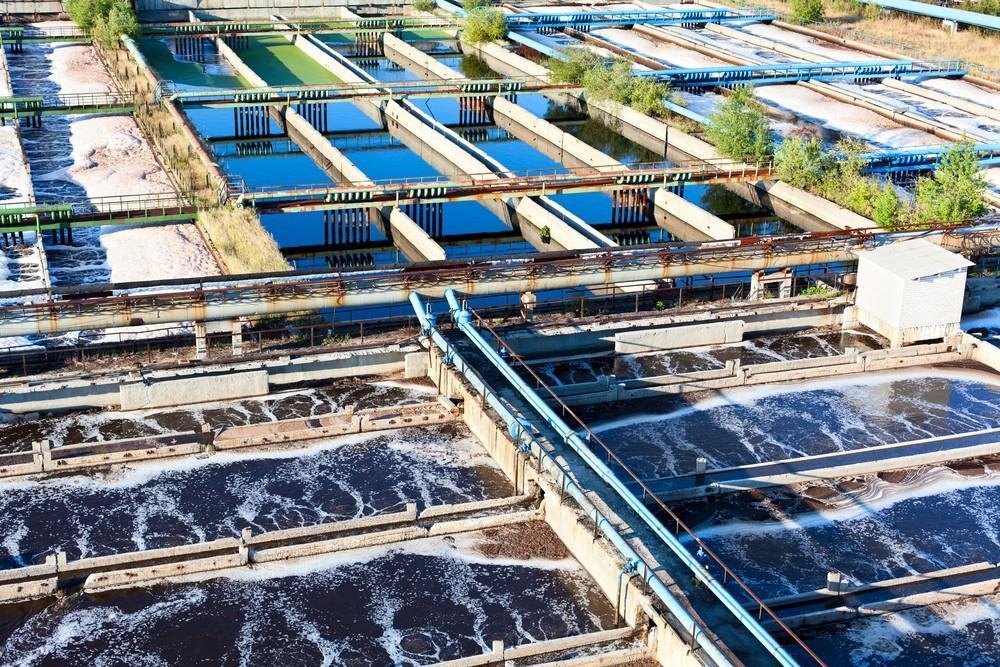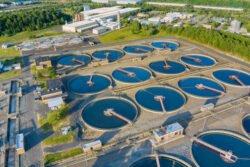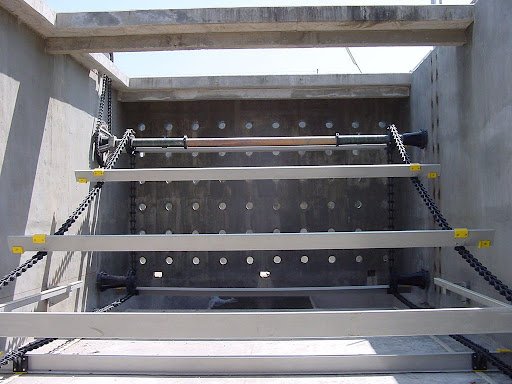
Aeration Tanks: Key Benefits and Functions Explained

Aeration tanks play a crucial role in wastewater treatment by adding air into the water, which encourages microbial growth. These microbes feed on organic material, helping to purify and clean the water. The process is a key part of activated sludge systems, widely used in many treatment plants today.
There are two primary methods to introduce air into these tanks: using blowers and mixers. Each method incorporates different techniques to enhance the efficiency of the system. The careful design and engineering of these aeration systems determine their effectiveness in treating wastewater.
The design and operation of aeration tanks have a significant impact on their efficiency and environmental footprint. Understanding their role in the treatment process can lead to more sustainable wastewater management practices.
Key Takeaways
- Aeration tanks are essential for cleaning wastewater.
- Air is introduced into tanks using blowers or mixers.
- Design impacts efficiency and sustainability.
Overview of Aeration Tanks
Aeration tanks play a crucial role in wastewater treatment by encouraging the growth of microbes that help break down organic matter. These tanks use air to support microbial growth, forming an essential part of modern waste management systems.
Definition and Purpose
Aeration tanks are an integral component of the activated sludge process. They introduce air into wastewater, encouraging microbial growth. These microbes consume organic materials, forming flocs that settle easily. This process efficiently reduces pollutants and helps in the purification of water. The oxygen supplied in these tanks is vital for the metabolism of the microbes. Without adequate oxygen, the microbial activity would slow down, leading to incomplete treatment.
Historical Development
The activated sludge process using aeration tanks dates back to the early 20th century. Originating in England, it revolutionized wastewater treatment by introducing a biological approach to pollution reduction. Over time, technological improvements have enhanced the efficiency and cost-effectiveness of aeration systems. The development of blowers and diffusers has optimized air distribution, making these tanks more effective. Historical advancements underscore the importance of innovation in environmental management.
Types of Aeration Tanks
Aeration tanks come in various designs, each suitable for specific applications. Continuous-flow tanks maintain a steady flow of wastewater, ensuring consistent treatment. Sequential batch reactors treat wastewater in batches, offering flexibility and control. Additionally, tanks vary in their methods of introducing air. Some use diffusers, which bubble air through water, while others employ mechanical mixers to disperse air evenly. The choice of tank type affects the efficiency of the wastewater treatment process.
Design and Engineering
Aeration tanks are crucial in wastewater treatment, playing a key role in breaking down organic waste. This section covers tank configurations, materials, aeration methods, and oxygen efficiency, offering insights into their design and engineering.
Tank Configurations
Aeration tanks can be designed in various configurations to suit specific treatment needs. Some common designs include rectangular and circular tanks. Rectangular tanks often provide efficient use of space and easy integration with other plant components, while circular tanks are preferred for turbulent mixing, which can enhance aeration effectiveness.
Proper dimensioning is vital, as it influences the oxygen transfer rate and the amount of mixing in the tank. The flow patterns created within the tank can impact the contact time between the wastewater and air, affecting treatment efficiency.
Material Considerations
The materials used in constructing aeration tanks significantly affect their durability and performance. Common materials include reinforced concrete and steel. Reinforced concrete is valued for its durability and resistance to corrosion, making it suitable for long-term use. Steel is chosen for its strength and versatility, although it may require protective coatings to prevent rust.
Selecting the right material also involves considering the specific chemical environment of the tank, including pH levels and the presence of corrosive substances. This ensures that the tank can withstand harsh conditions without degrading over time.
Aeration Methods
Various aeration methods are used to introduce air into the tank, enhancing microbial action. Two primary methods are blowers and mixers. Blowers introduce air through diffusers placed at the bottom of the tank, creating fine air bubbles that rise and mix the water. Mixers, on the other hand, mechanically agitate the water, promoting effective oxygen distribution.
Choosing between these methods depends on factors like energy efficiency, maintenance requirements, and the specific characteristics of the wastewater being treated.
Oxygen Transfer Efficiency
Oxygen transfer efficiency (OTE) is a critical factor in the design of aeration tanks. It measures how effectively oxygen is introduced into the wastewater, influencing the efficacy of the treatment process. High OTE indicates that a significant portion of the supplied air is being absorbed by the liquid, promoting efficient microbial activity.
Improving OTE can involve optimizing the design of diffusers and adjusting the aeration rate. The choice of diffuser types, such as membrane air diffusers versus ceramic ones, can also affect oxygen transfer rates. This helps in reducing energy costs associated with the aeration process, making it a key consideration in sustainable wastewater management.
Operational Parameters
Aeration tanks play a crucial role in wastewater treatment by improving oxygen levels and supporting microbial activity. Key operational parameters include flow rates, process control, and maintenance, each impacting efficiency and effectiveness.
Flow Rates and Loading
Flow rates in aeration tanks determine how much wastewater enters the system and how quickly it is treated. Proper management of these rates is essential to ensure that the microbes have enough time to break down organic material. When flow rates are too high, the system can become overloaded, reducing treatment efficiency.
Loading rates refer to the amount of organic matter introduced into the tank. These rates must be balanced with the system’s capacity to handle waste effectively. Adjusting both flow and loading rates helps maintain optimum conditions for microbial activity. This ensures effective wastewater treatment and prolongs the lifespan of the aeration system.
Process Control
Process control involves monitoring and adjusting variables like dissolved oxygen levels, pH, and temperature. These parameters affect microbial health and activity. Dissolved oxygen (DO) is continuously measured to ensure adequate supply for aerobic bacteria.
Achieving the correct DO levels is critical as too little oxygen slows down microbial processes, and too much can lead to unnecessary energy consumption. Operators should also keep track of pH levels, as microbes have specific pH requirements for optimal activity. Likewise, maintaining proper temperature is vital, as extreme temperatures can negatively impact treatment efficiency.
Maintenance and Upkeep
Regular maintenance ensures the aeration tank operates efficiently. Inspections should focus on aerators, including blowers and mixers, to check for wear or malfunction. Proper functioning of these components is vital for consistent aeration. Additionally, cleaning the tank periodically prevents the build-up of materials that could obstruct water flow or oxygen transfer.
Routine upkeep includes checking for leaks and ensuring seals remain intact. Keeping an eye on the mechanical parts of the system helps prevent unexpected downtime and prolongs the unit’s lifespan. Well-maintained aeration tanks optimize wastewater treatment processes, reducing the risk of system failures.
Applications in Wastewater Treatment
Aeration tanks play a crucial role in managing wastewater across various sectors. They introduce air into water, boosting microbial growth and aiding in the breakdown of waste materials. This process is vital in municipal, industrial, and agricultural settings.
Municipal Wastewater Treatment
Aeration tanks are essential in municipal wastewater treatment. They help manage the large volumes of waste generated by urban areas. In these systems, air is introduced to encourage microbe growth, which breaks down organic matter. This aerobic process makes it possible to treat and discharge over 34 billion gallons of wastewater daily in the U.S.
These tanks are the heart of the activated sludge process and significantly reduce pollution by transforming organic waste into stable forms. As energy consumption is high, efficient aeration design is crucial to minimizing costs while keeping up with environmental standards.
Industrial Wastewater Management
In industrial settings, aeration tanks are vital for managing waste from factories and processing plants. Industries often produce wastewater with chemicals and heavy metals that require intensive treatment. The aeration process helps reduce pollutants before discharge.
Systems often use different types of blowers and mixers to achieve required oxygen levels. Energy efficiency is a major concern, as these operations consume significant power. Effective aeration can lower the environmental impact of industrial activities and ensure compliance with regulatory standards.
Agricultural and Aquaculture Uses
Agriculture and aquaculture benefit from aeration tanks by reducing waste and improving water quality. In farming, these systems manage wastewater from livestock, preventing harmful runoff into natural water bodies. They convert waste into by-products that are less hazardous.
In aquaculture, aeration enhances water quality, promoting healthier conditions for fish and other aquatic organisms. Oxygen levels are crucial for the survival and growth of species in controlled environments. This makes aeration tanks an indispensable tool for maintaining balance and ensuring sustainable practices in both agricultural and aquaculture applications.
Environmental Impact and Sustainability
Aeration tanks play a significant role in water treatment processes, but their environmental impact and sustainability are crucial concerns. Key topics include energy consumption, emissions control strategies, and advancements in eco-friendly designs.
Energy Consumption
Aeration tanks often require significant energy to operate, especially when using blowers and mixers to introduce air into the system. Energy usage can be optimized by employing more efficient equipment and utilizing variable speed drives. Additionally, real-time monitoring and control systems help in reducing unnecessary energy consumption by adjusting operations according to demand.
The implementation of energy recovery systems, such as converting gases produced during the process into power, further contributes to reducing the overall energy footprint. Exploring renewable energy sources, like solar or wind power, for supplying electricity to these systems can also enhance sustainability.
Emission Controls
Emission controls are essential in mitigating the environmental impact of aeration tanks. Treatment processes can emit various gases, including carbon dioxide and methane. Installing appropriate gas collection systems helps manage these emissions effectively.
Additionally, upgrading to biological treatment methods can reduce odor and harmful emissions significantly. The use of advanced filtration and scrubber systems can also aid in capturing unwanted gases before they are released into the atmosphere. Adopting these technologies demonstrates a commitment to reducing air pollution and protecting the environment.
Advances in Sustainable Design
Innovations in sustainable design for aeration tanks focus on minimizing resource use and environmental impact. Deploying designs with improved aeration efficiency results in lower energy consumption and more effective oxygen transfer. Eco-friendly materials, such as recycled or low-impact construction materials, contribute to sustainability as well.
Incorporating nature-based solutions, like constructed wetlands, as part of the aeration process is another strategy that enhances sustainability. Applying these advances helps stretch resources further and align wastewater treatment infrastructure with ecological preservation goals.
Through these practices and technologies, aeration systems can significantly reduce their environmental footprint, making water treatment both efficient and sustainable.
Challenges and Innovations
Aeration tanks face numerous operational challenges, but technological advances are addressing these issues. Future prospects continue to hold promise for more efficient systems and improved performance in wastewater treatment.
Operational Challenges
Aeration tanks are vital in wastewater treatment, but they come with their own set of challenges. Energy consumption is a significant concern, as these systems require substantial power to operate efficiently. This not only impacts operational costs but also affects environmental sustainability.
Issues with oxygen transfer efficiency can further complicate processes. Systems must deliver the right amount of oxygen to support microbial life, and this can be difficult with varying organic loads. Poor oxygen distribution can lead to inadequate treatment and increased maintenance needs.
Equipment maintenance presents another challenge. Blowers and mixers may experience wear and tear, requiring frequent monitoring and repairs. This adds to costs and can lead to downtime if not managed effectively.
Technological Advances
Recent technological advances have addressed some of these challenges. The use of energy-efficient blowers and diffusers helps reduce energy consumption. These devices optimize air delivery and improve oxygen transfer in combustion processes.
Advanced control systems are being integrated into many plants. They utilize sensors and algorithms to adjust operations in real-time, ensuring proper aeration and reducing waste. This enhances operational efficiency and lowers costs.
Innovations in blower and diffuser designs have improved reliability and extended equipment lifespan. These improvements not only save on maintenance but also contribute to more consistent performance in aeration tanks.
Future Prospects
The future of aeration tanks looks promising, thanks to ongoing research and development. Smart technologies are expected to play an increased role. These systems can predict maintenance needs, streamline operations, and reduce manual interventions through automated data analysis.
Sustainability is a growing focus. New technologies aim to further lower energy usage and integrate renewable energy sources. This helps make wastewater treatment facilities more eco-friendly.
The development of biological aeration processes is another exciting prospect. By enhancing microbial communities, these methods aim to improve efficiency and effectiveness while reducing reliance on mechanical components. Such advances could redefine how aeration tanks operate in the coming years.
Frequently Asked Questions
How does an aeration tank work in water treatment processes?
An aeration tank introduces air into the water, boosting microbial growth. These microbes consume and break down organic material, forming clumps that eventually settle.
What are the primary purposes of using aeration tanks in wastewater management?
Aeration tanks are primarily used to improve water quality by removing organic pollutants. They enhance the breakdown of organic matter, resulting in cleaner effluent.
Can you explain the differences between various types of aeration used in water treatment?
There are different types of aeration systems, such as blowers and mixers. Blowers push air into the water, while mixers help distribute it evenly throughout the tank.
What are the key design considerations for an effective aeration tank?
Design considerations include the size and shape of the tank, the type of aeration system, and the capacity needed to handle the expected wastewater volume efficiently.
How does an aeration tank differ from a conventional septic system?
An aeration tank actively introduces air to break down waste faster, while a septic system relies on natural processes in a more passive manner without added air.
What factors influence the efficiency of an aeration tank in treating wastewater?
Efficiency depends on factors like the tank's design, the type of aeration employed, oxygen levels, and the balance of microbial populations within the system.


